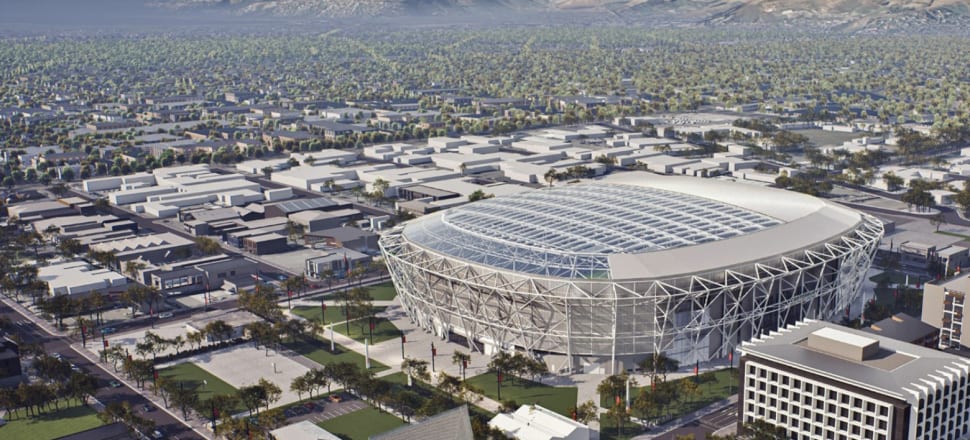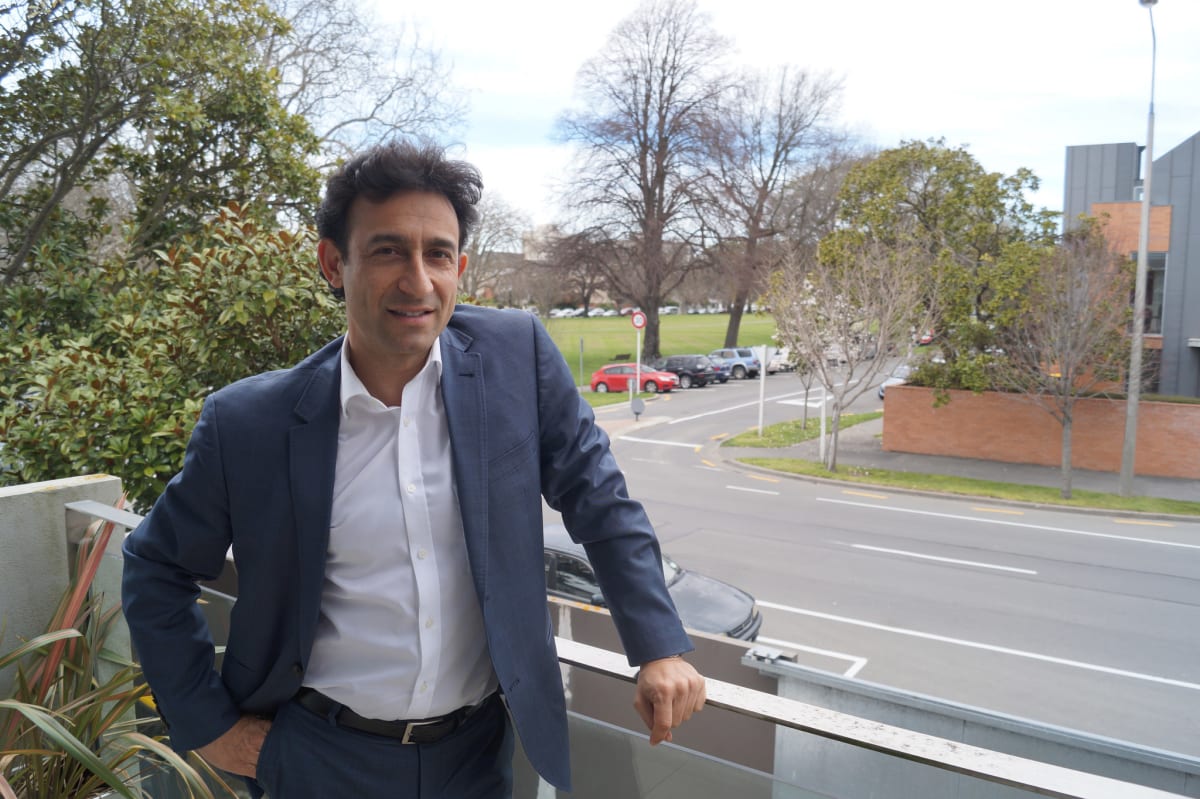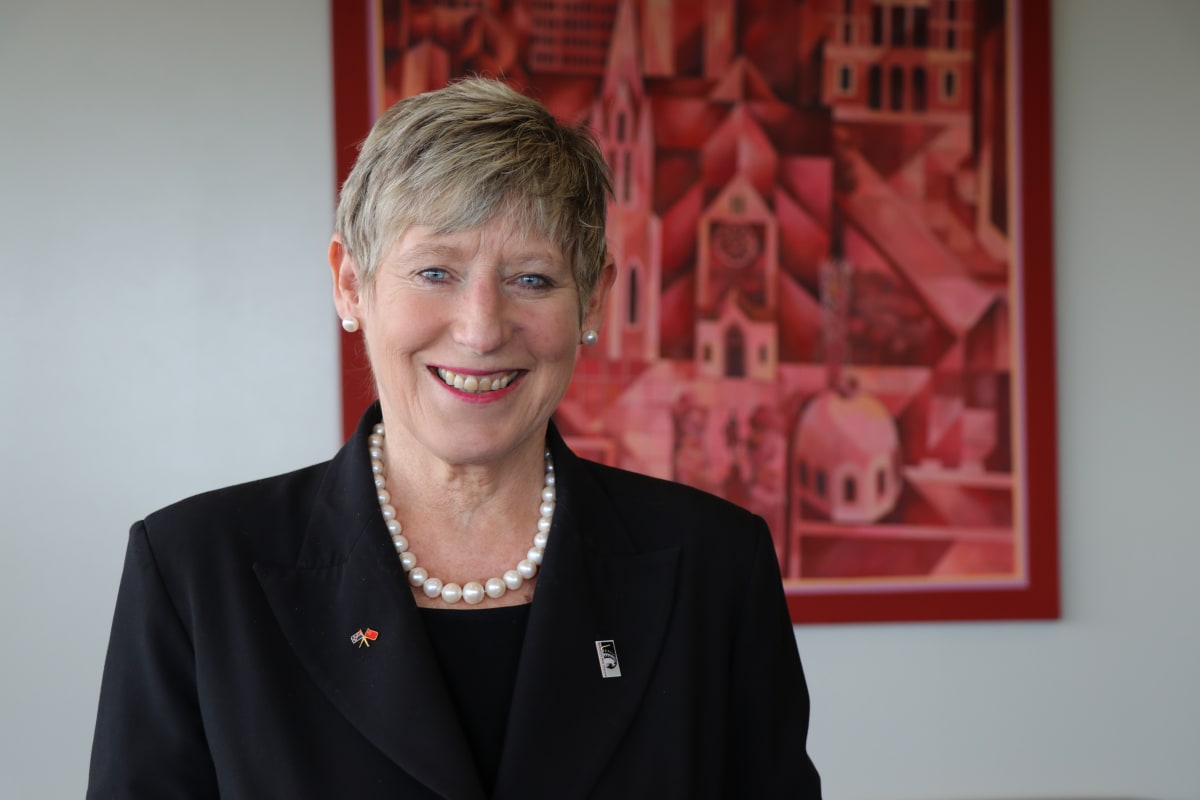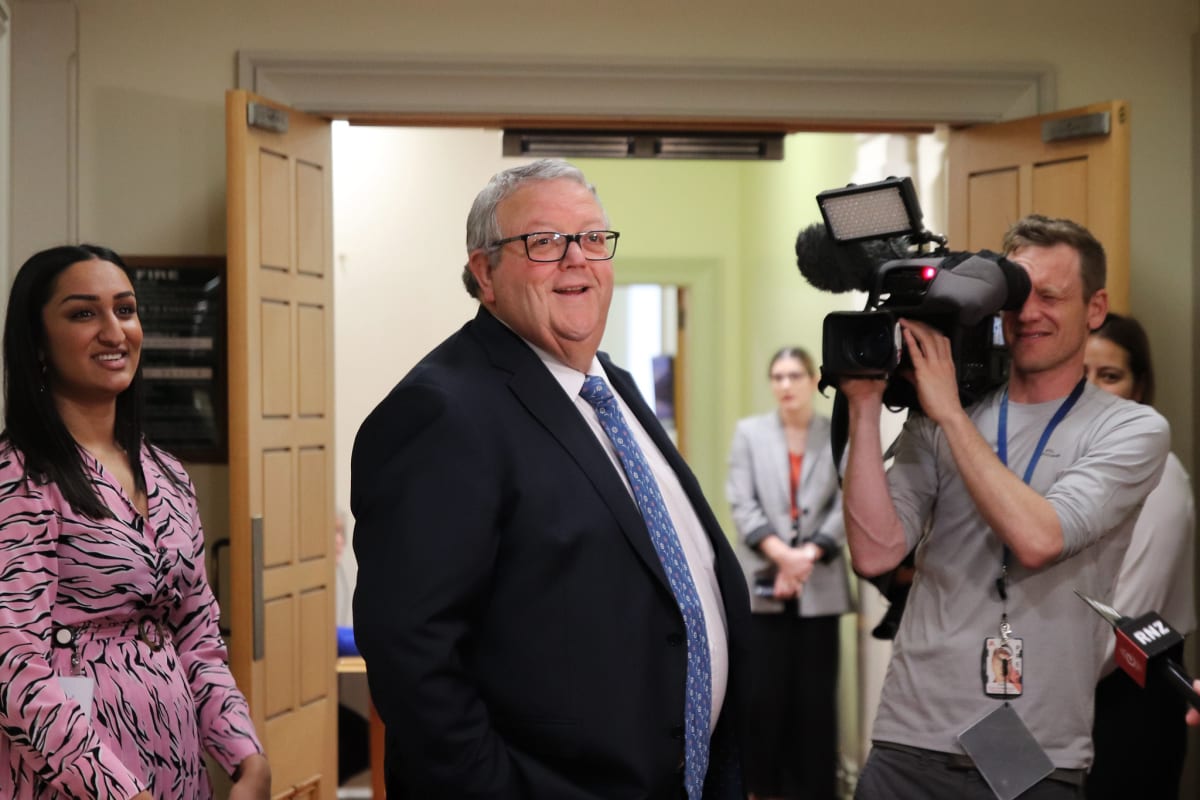
Context evaporates in a city’s heated debate over a new stadium. David Williams reports
You could call it the seven-year glitch.
In 2015, Christchurch’s city council decided to defer a decision on a new, covered stadium, now known as Te Kaha. This is now seized on as a turning point; a key moment to explain the city’s $683 million conundrum.
Pessimists will say councillors, who will vote on July 14, are being inexorably dragged into the sarlacc pit (to use a Star Wars reference) of quicksand-like costs, and the sharp teeth of debt, soon to become trapped in an endless cycle of operational losses as its shells out millions to attract events.
But the council has come too far, it seems, having already spent $40 million on the project. In a column for the NZ Herald, Mayor Lianne Dalziel, who is stepping down at the local body elections, sets out her preference for getting on with it.
Thousands of sports-mad Cantabrians – urged on by a coterie of bellicose commentators, self-interested business and sports people, and grandstanding local politicians – are flooding the council with submissions, presumably urging them to spend hundreds of millions of dollars to get on and build it.
Not having a shiny new stadium would relegate Christchurch “to a city of broken dreams and shattered promises”, wrote table-thumping Press columnist Mike Yardley, while Crusaders coach Scott Robertson called on leaders to be “brave”.
(The latter comment is rich coming from a body that wasn’t brave enough to change its name after a terrorist attack, and which didn’t respond to questions from Newsroom about how much money it was willing to contribute to the stadium fund.)
How did we get here?
A simplified narrative of the 2015 deferral doesn’t do justice to the time when a city was struggling to emerge from the devastating effects of the earthquakes, and after central government waded in to make important calls.

As with many big, post-quake projects in the city, the genesis of the stadium comes back to the National-led Government’s “blueprint”, unveiled in 2012, which divided the central city into “frames” and set where infrastructure projects would be built.
The initial plan was for a covered, 35,000-seat stadium – not on the old, Lancaster Park site, in Phillipstown, but on the edge of the city’s central business district.
“The beautiful video came out, this fantastic covered stadium, and, yeah, it looked very nice,” says Raf Manji, a former city councillor who chaired the finance committee, and now leads The Opportunities Party.
“But the question was, how is all this stuff going to be funded?”
Back then, Prime Minister John Key was somewhat mute about the additional billions needed by the city. Sure, the Government would pay for new hospital buildings, he said, but funding for other projects was “more debatable”, and depended on the civic assets Cantabrians wanted.
The stadium’s projected cost was revealed in 2013 as $506 million, and the council set aside $253 million.
The Crown committed to buying the land for the site – although this took many years – and the Government set up a new service, Invest Christchurch, to encourage private investment. (Land purchases plus demolition costs total about $59 million, plus another $10 million for decontamination.)
The yawning gap of more than $200 million remained.
“It wasn’t a funded project, unlike, say, metro sports, the new bus exchange, or the library,” Manji says.
There was another problem. The Government had announced a new stadium before the council had settled its insurance claims.
“The insurers dragged their feet,” Manji says. “They said, ‘Oh, you’re going to build a new one anyway, you’re not going to repair it’, and we got into this terrible position.”
The council’s $635 million insurance payout in 2015 was a record, but it was almost $300 million less than it asked for.
The council was woefully under-insured, it was thought, subsequently. Adding to the financial headaches, its unaudited three-year plan, rushed in after the quakes at the behest of the Government, bundled hundreds of millions into an abnormal item labelled “savings to be found”.
Financial pressure told. In 2013, Key spoke publicly about downsizing projects to save money. Soon after, the Government and council signed a controversial cost-sharing agreement.
The Government flexed its muscles over the agreement, trimming $400 million off the total infrastructure bill. It refused to fund infrastructure repairs to “as new”.
Atmosphere of secrecy
Much of this happened in an atmosphere of secrecy, only to be revealed later.
“The Government would never share any information with us,” says Manji, who gained his council seat in 2013. “We had to OIA [use the Official Information Act to get] Cabinet papers or get Cabinet papers through the back door, which we did from time to time.”
One paper, provided to Manji privately, showed Treasury forecasts of a $1.6 billion hole in the cost-sharing budget – meaning a gap between what was proposed and the money to pay for it.
“This stuff was known within government, but maybe not at a wide level,” Manji says.
Meanwhile, the council ran its own numbers.
An external audit of the council’s finances in 2014 estimated cost overruns of about half a billion dollars, most of which was the increased cost of road and sewer repairs. In its 10-year plan the following year, the council identified a $1.2 billion shortfall, and contemplated asset sales and years of steep rates hikes.
In summary, there was too much to do and not enough money. The Government had squeezed the infrastructure budget, and the insurance payout was unlikely to be as high as hoped.
Faced with the impossible, ratepayers were pragmatic: many felt putting a new stadium on the backburner – particularly when private backers couldn’t be found – was the right thing to do.
Dalziel, the mayor, who is a former Labour MP and Cabinet Minister, said in late 2015 she’d prefer delaying parts of the quake rebuild to keep rates lower.
As Manji said in 2015: “We’re all keen to see a new stadium for Christchurch but we more have more pressing issues ahead of us as a city and, for now, the temporary stadium can see us through.”
Even in 2016, when the council considered amendments to its long-term plan, there was little heat about the prioritisation of its capital programme, especially if it meant council-owned assets wouldn’t be sold or, in the case of the airport, partially floated.

Manji tells Newsroom he thought central Government should have stumped up “their share” of the stadium so construction could have started. In fact, a Cabinet paper penned before the cost-share agreement was signed, recommended funding the stadium.
As Manji tells it, National Cabinet minister Gerry Brownlee might have supported a Government cash injection but he couldn’t get it past Finance Minister Bill English, who was fixated on achieving a Government surplus.
“They got their surplus, they got re-elected,” Manji says. (Actually, the election came first.)
“We had a meeting, and Bill was like, oh well, [Otago] has got its stadium, that’s all very nice. What’s the fuss? And I think there was a power struggle there.”
Brownlee, now an opposition list MP, responds: “That’s a very simplistic way of looking at it. I don’t think that’s the case.”
The stadium was the council’s responsibility, Brownlee says, and it was adamant that was the last thing that would get done.
The Government paid for the land and decontamination, business case and a pre-feasibility study.
It also poured $30 million into upgrading the temporary stadium. “We felt the city needed that to see sunlight on the horizon,” Brownlee says. “It wasn’t like we weren’t doing anything.”
There was a standoff, however, that contributed to delays. When the council deferred the stadium, the Government deferred the business case.
“Commencing a business case in 2015, more than five years ahead of the CCC funding decision, would have been a complete waste of money,” Brownlee said at the time.
The stadium languished, unfunded.
The council passed its long term plan in a tight vote in 2015, and deferred the stadium.
“That $253 million was sitting there in the budget, we just didn't have the other $253 million,” Manji says, referring to what, by then, was a back-of-the-envelope, three-year-old figure.

The stadium story’s next chapter also involves Manji.
After the 2016 local elections, he planned to approach Key to “finish the job” in Christchurch, and announce that as part of the following year’s election. But Key resigned months later, and Manji says “we couldn’t get any engagement” about more funding.
So Manji entered national politics himself, standing in the Ilam electorate in 2017 as an independent against his old foe Brownlee. (He was trounced by more than 8000 votes, but got second.)
Manji’s big election pitch was a $1 billion fund for Christchurch, including $200 million for the new stadium, and a tilt at securing the Commonwealth Games.
As election day approached, the big parties responded: $120 million for a new stadium from National, while Labour “gazumped that”, Brownlee says, by pledging $300 million for the city’s rebuild projects.
“I certainly had an impact,” Manji says, “we did get more money.” (Given Labour’s success in Christchurch, he reckons not offering another $100 million cost National the election.)
Then, more inertia. It took ages for decisions to be made, he says.
“Once we had the money from Labour after the 2017 election, we should have got on with it, and we didn’t. We consulted and we fought over whether the money should go to the stadium.”
Brownlee says he’s astonished at the council’s inaction. Woods, the Labour Minister, told NewstalkZB earlier this month the project has taken too long, and cost escalations are inevitable given such delays.
It was a project the council wanted to lead, she said. “Our role now is very much just ensuring that that $220 million of taxpayer money is spent how it was said it was going to as per the agreement.”
Dalziel, the mayor, acknowledges the stadium has been bogged down in process, but she believes it was not of its making.
She notes soon after the election, Labour’s Christchurch Rebuild Minister Megan Woods tore up an early contractor involvement contract for the planned metro sports centre over a $75 million cost over-run. Officials were asked to consider whether it was a good idea to build both the sports centre and the stadium on the same site.
No, was the answer to that question.
“I actually don’t criticise central government for wanting to have really clear oversight about contributing another $220 million.” – Lianne Dalziel
Dalziel says she’s not criticising the Government’s review – “it’s something that you have to do”.
(The sports centre, which includes competition and leisure pools, hydroslides and multi-purpose indoor courts, was meant to be completed last year but still isn’t finished.)
In the May 2018 Budget, the Government confirmed its $300 million capital regeneration acceleration fund for Christchurch, and in September, the council confirmed its investment proposals to the Government, including $220 million for the stadium.
This required a more detailed investment case, overseen by an officials group comprising the Department of Prime Minister and Cabinet, Treasury, Ōtākaro, and Land Information New Zealand.
“That’s where things took considerably longer than anyone had anticipated,” Dalziel says. Consulting firm EY was appointed in January 2019, and the business case wasn’t signed off until December. The council and Government signed a funding agreement in October 2020, the same year the global pandemic arrived.
Could the council have acted more quickly? Maybe, Dalziel says. Maybe the council could have submitted its plan earlier, and EY could have been appointed more quickly. But that would have saved mere months, she says.
“I actually don’t criticise central government for wanting to have really clear oversight about contributing another $220 million,” Dalziel says.
“There was no $300 million cheque signed off, and there were very strict oversight requirements that meant that the investment case, and the requirements of the investment case, were considerably more than they otherwise would have been.”
To bring us up to date, last year an $88 million cost escalation scared councillors into favouring a smaller, 25,000-seat covered stadium. But that was overturned within a month, thanks to a 24,000-strong petition, and strong public pressure.
Back then, the cost had crept up to an estimated $523 million – although some councillors warned that could go beyond $700 million. The current estimate, revealed earlier this month, is $683 million – adding $150 million to the council’s bill.
That has sparked further public consultation, drawing more than 20,000 submissions.
Unknown variables include any contribution from other councils, and the possible sale of the temporary stadium. Putting those variables aside, the cost to the owner of the average residential property is $144 a year between 2025 and 2027, and then declining “slowly” over the loan’s 30-year life.
Consultation ends on July 5 and councillors will vote on July 14.
For his part, National MP Brownlee hopes councillors gets the stadium “straightened out” – “and recognise the decisions they make they are for decades ahead”.
Where does this leave us?
If there’s a lesson in the stadium saga, Manji reckons it is projects work better when there’s a single client – like the council’s town hall and library projects, or the Crown’s convention centre.
But what of the decision now in front of his former colleagues? Manji thinks back to cost overruns for the city’s town hall, and his view is you just push on and deliver it.
“Like when you’re renovating a kitchen or bathroom and the builder goes there’s an extra three grand to do X, and you just do it because you want to get it finished.”
The city’s leaders in 2013 might not think too much of a cost escalation from $506 million to $680 million for a stadium finished in 2026, he posits.
“The premise for the stadium is still the same as it was in 2012, unless you’ve decided there’s no point having a stadium anymore, and I don’t think that's the issue.”
The issue is, simply, the cost has increased.
Still, it won’t be an easy decision for councillors – “and it is a painful lesson to everyone”.
“It’s so frustrating because it could have been solved so simply – no one would even remember it now,” Manji says.
“What can you say? You just have to kind of have to apologise, essentially, to the people to say, ‘Yeah, we didn’t get this done’.
“And we all have to put our hands up and say collectively we did a bad job.”







